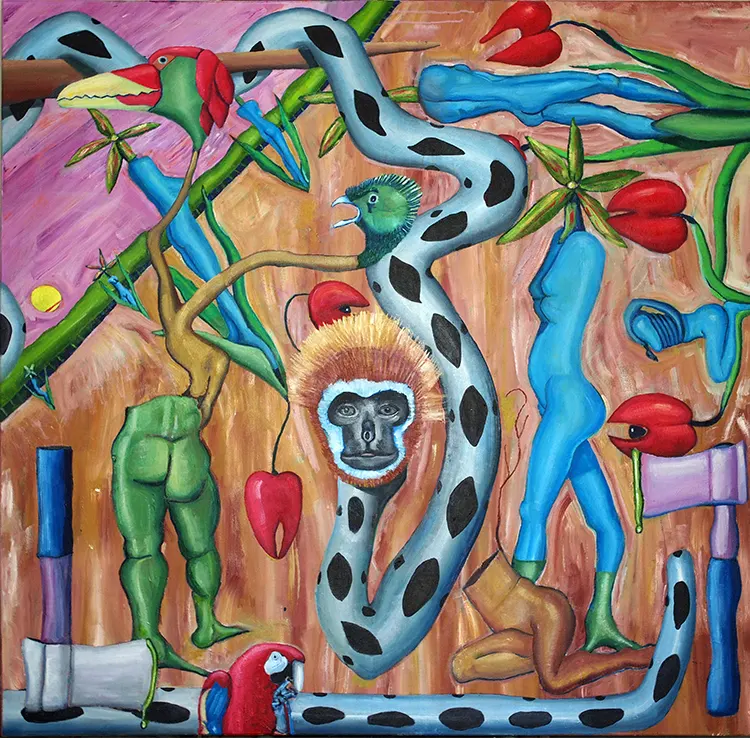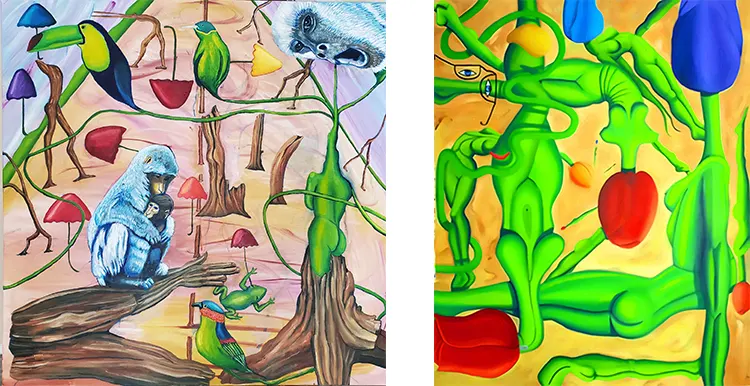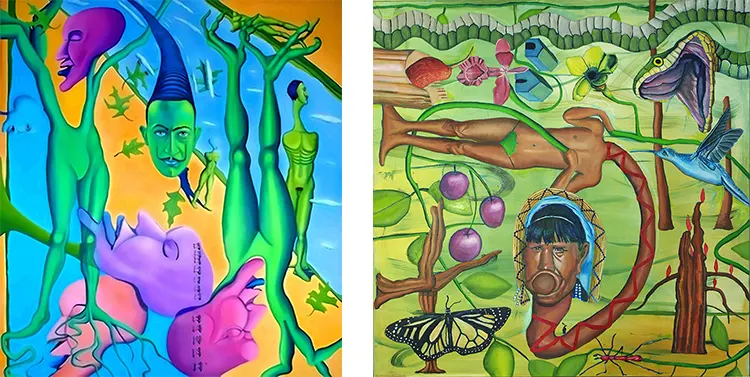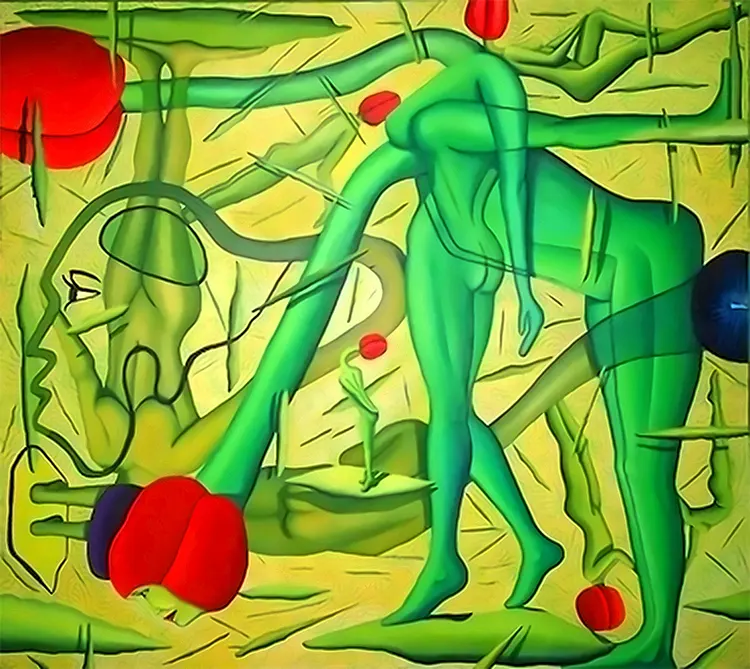“In 2008, I declared my creation of a new design principle entitled, ‘Directions’, which relates to light and sacred geometry.”
The Genesis of a Visionary Artist
Jon Neal Wallace stands as a testament to the transformative power of education and personal vision in the realm of art. His journey began at the Academy of Art College in San Francisco, an institution that laid the foundation for his artistic endeavors. Wallace’s educational path took a unique turn when he merged art with physics at Vermont College of the UI&U in Montpelier, Vermont. This interdisciplinary approach culminated in a groundbreaking thesis, “Light from Design,” published in 2008 by UMIPROQUEST. In this work, Wallace introduced “Directions,” a design principle that intertwines light and sacred geometry, signaling the inception of a distinctive style that has since permeated every piece of his artwork. From the “Light” series to his exploration of environmental themes, Wallace’s work reflects a deep engagement with the principles he established, evolving into series that capture the essence of rainforests and national parks through a lens of neo-surrealism or what he terms “Light paintings.”
Wallace’s artistic voyage was ignited in a high school art class, a space where his passion for creation first blossomed. The surreal landscapes crafted by Salvador Dali and Rene Magritte offered a window into a world where the boundaries of reality and imagination blur, inspiring Wallace to embark on a career that transcends traditional artistic norms. This early inspiration, coupled with his innovative approach to combining art and science, has allowed Wallace to develop a unique artistic voice. His style, characterized by the fusion of neo-surrealism with a profound exploration of light, invites viewers into a realm where the familiar is reimagined, and the sacred geometry underpinning our universe is laid bare.

Jon Neal Wallace: A Sanctuary of Creativity and Influence
The sanctity of Jon Neal Wallace’s workspace is pivotal to his creative process. Immersed in the tranquility of a quiet neighborhood, his studio is a haven where music—ranging from blues rock to rock—serves as a backdrop to the dance of brush and canvas. Living alone, Wallace has crafted an environment conducive to deep focus and uninterrupted exploration of his artistic vision. This setting is not just a physical space but a reflection of the internal world from which his art emerges, a world shaped by the influences of iconic artists such as Salvador Dali, Rene Magritte, Picasso, Alex Gray, HR Giger, and Leonardo Da Vinci. Their impact is evident not only in Wallace’s thematic choices but also in the technical mastery and innovative spirit that define his work.
Among the myriad of pieces Wallace has created, the artwork featuring Ai Weiwei and Mao Zedong stands out for its intended commentary on democracy in China—a piece commissioned for an exhibition alongside Ai Weiwei and Anton Kandinsky, which unfortunately never came to fruition. This artwork, alongside “Yellowstone 2: The Shaman” from his National Park series, underscores Wallace’s ability to infuse his work with layers of meaning, inviting contemplation on themes of freedom, nature, and spiritual inquiry. Wallace’s choice of oil paint as his primary medium—although he has experimented with acrylics—underscores a commitment to the depth and texture that oil can convey, further enriching the narrative and emotional resonance of his pieces. With aspirations of showcasing his work in museums and prestigious galleries, facilitated by his agent Adele du Tertre ([email protected]), Wallace is poised to elevate his visionary creations to new heights, inviting audiences worldwide to partake in his journey of light, geometry, and profound artistic exploration.

Jon Neal Wallace: From Light to Rainforests
Jon Neal Wallace’s artistic journey is marked by an evolving series of works that encapsulate his deepening engagement with environmental themes, a progression that speaks to both his personal growth and the broader concerns of our time. The transition from his initial “Light” series to the subsequent focus on “Environment” and, more recently, “Rainforests and National Parks,” illustrates a narrative of increasing complexity and relevance. Each series, infused with Wallace’s signature design principle, Directions, showcases a unique blend of light manipulation and sacred geometry, creating visual narratives that draw viewers into a contemplative engagement with the natural world. Through these series, Wallace not only explores the aesthetic dimensions of these landscapes but also prompts a dialogue on their preservation and the intricate balance between human existence and the environment. This thematic evolution reflects a maturation of Wallace’s artistic vision, moving from abstract explorations of light to a more grounded, though no less ethereal, depiction of nature’s splendor and fragility.
Wallace’s current work on the “Rainforests and National Park” series is particularly emblematic of his commitment to marrying aesthetic beauty with environmental advocacy. By choosing subjects that are both visually stunning and ecologically significant, Wallace extends an invitation to viewers to consider the deeper implications of his art. These pieces serve as a reminder of the beauty that surrounds us, the complexity of ecosystems that sustain life, and the urgent need to protect these precious resources from the threats of deforestation, climate change, and human encroachment. Through his art, Wallace acts as both a storyteller and a conservationist, leveraging the power of visual imagery to inspire appreciation, awareness, and action towards preserving our planet’s natural heritage.

Artistic Inspirations and the Quest for Museum Recognition
The influence of luminaries such as Salvador Dali, Rene Magritte, and Leonardo Da Vinci on Jon Neal Wallace’s work is profound, informing not only his thematic choices but also his approach to composition and form. Yet, Wallace’s art is not merely derivative; it is a dialogue with the masters of the past, reinterpreted through the lens of contemporary concerns and his unique perspective. This interplay of influence and innovation is a cornerstone of Wallace’s artistic identity, allowing him to navigate the fine line between homage and originality. His works are conversations across time, where the surreal landscapes of Magritte and the meticulous details of Da Vinci’s studies are reimagined in the context of today’s environmental and existential challenges.
Looking ahead, Wallace, with the support of his agent Adele du Tertre, aspires to bring his visionary works to a broader audience through exhibitions in museums and distinguished galleries. This ambition is not just about personal achievement but also about the potential for art to influence public discourse and inspire change. Museum exhibitions would provide a platform for Wallace’s works to reach a diverse audience, offering immersive experiences that provoke thought, evoke emotion, and inspire a sense of wonder and responsibility towards the natural world. As Wallace continues to explore and expand his artistic boundaries, his quest for museum recognition is a testament to his belief in the power of art as a catalyst for understanding, appreciating, and ultimately conserving the beauty and diversity of our planet. Through his persistent pursuit of this goal, Jon Neal Wallace stands as a beacon for the role of art in addressing some of the most pressing issues of our time, reminding us that beauty, awareness, and action can converge in the canvas of a visionary artist.






